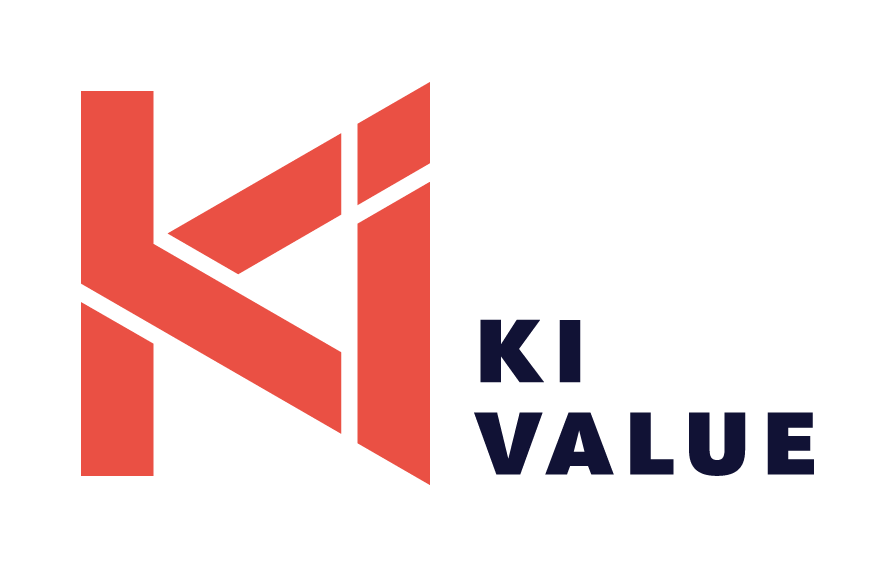To make KIVALUE work and improve your user experience, we log user data and employ essential cookies. By using KIVALUE website, you agree to our Privacy Policy, including cookie policy.
OK
New Partnership with Pricen in Italy: Read Here
BLOG //
The Ultimate Guide to Merchandise Planning: 9 Crucial Things That Can't Be Ignored
Having a Merchandise Plan that takes into account all the elements necessary for end-to-end management makes retail so much easier. It also reduces cost and customer churn, and keeps a brand ahead of competitors.
Fashion retail is a dynamic world, and Merchandise Planning is the cornerstone of a retailer’s success.
It plays a vital role in driving sales, ensuring profitability, and delivering unforgettable customer experiences.
The best merchandise plans enable retail planners to navigate the ever-changing landscape of consumer preferences, seasonal shifts, and market trends with confidence.
But when things aren’t running well, merchandise plans tend to fall apart rather quickly. And then so do operations.
So how can a fashion retailer utilise their merchandise plan to maximise sales, expand the business and make their customers come back for more?
After all, there are many pitfalls. And particularly in these unstable economic times, you can look around and see that plenty of brands have suffered because they haven’t sorted out their merchandise plan.
So let’s have a look at what Merchandise Planning is, how important it is, and what simply cannot be ignored.
It plays a vital role in driving sales, ensuring profitability, and delivering unforgettable customer experiences.
The best merchandise plans enable retail planners to navigate the ever-changing landscape of consumer preferences, seasonal shifts, and market trends with confidence.
But when things aren’t running well, merchandise plans tend to fall apart rather quickly. And then so do operations.
So how can a fashion retailer utilise their merchandise plan to maximise sales, expand the business and make their customers come back for more?
After all, there are many pitfalls. And particularly in these unstable economic times, you can look around and see that plenty of brands have suffered because they haven’t sorted out their merchandise plan.
So let’s have a look at what Merchandise Planning is, how important it is, and what simply cannot be ignored.
CONTENTS
//
//
//
//
//
//
//
//
//
//
//

What is Retail Merchandise Planning?
Merchandise Planning refers to the strategic process of forecasting demand, managing inventory, and determining the optimal product mix to maximize profitability.
It’s a multi-faceted process that incorporates some intensive processes.
One is determining the right Product Assortment. This demands correctly analyzing market trends, customer preferences, and historical sales data to identify which styles, colours, and sizes will be in demand during a specific season.
This means that merchandise planners must strike a constant balance between meeting consumer needs and minimizing inventory costs to maximize profits.
Planners must also continually monitor competitors' Pricing, Production Costs, and Perceived Value so that they can establish the optimal price point for their products.
These pricing strategies may need to be adjusted as seasons progress, taking into consideration factors such as discounts, promotions, and markdowns.
Supply Chain Management involves coordinating with suppliers, manufacturers, and logistics partners to ensure the timely production and delivery of products.
It’s a real challenge, especially when supply chain problems rear their ugly head (which is all the time). Planners must source materials, manage production timelines, and address potential delays or disruptions in the supply chain as fast as possible and often with very little, if any, notice.
A good supply chain means a fashion retailer can reduce lead times, minimize stockouts, and avoid overstock situations that may result in costly markdowns.
Sustainability has become an increasingly important issue in fashion Merchandise Planning as consumers become more environmentally conscious. So sustainable materials, ethical labor practices, and reducing waste and pollution throughout the end-to-end chain is a long-term strategy to strengthen a retailer.
And of course there’s the ever-changing retail landscape and Consumer Shopping Behaviours. The e-commerce boom and online shopping demand excellent merchandise tactics like optimizing product offerings for online sales, incorporating data-driven marketing strategies, and leveraging technology to improve inventory management and customer engagement.
Merchandise Planning refers to the strategic process of forecasting demand, managing inventory, and determining the optimal product mix to maximize profitability.
It’s a multi-faceted process that incorporates some intensive processes.
One is determining the right Product Assortment. This demands correctly analyzing market trends, customer preferences, and historical sales data to identify which styles, colours, and sizes will be in demand during a specific season.
This means that merchandise planners must strike a constant balance between meeting consumer needs and minimizing inventory costs to maximize profits.
Planners must also continually monitor competitors' Pricing, Production Costs, and Perceived Value so that they can establish the optimal price point for their products.
These pricing strategies may need to be adjusted as seasons progress, taking into consideration factors such as discounts, promotions, and markdowns.
Supply Chain Management involves coordinating with suppliers, manufacturers, and logistics partners to ensure the timely production and delivery of products.
It’s a real challenge, especially when supply chain problems rear their ugly head (which is all the time). Planners must source materials, manage production timelines, and address potential delays or disruptions in the supply chain as fast as possible and often with very little, if any, notice.
A good supply chain means a fashion retailer can reduce lead times, minimize stockouts, and avoid overstock situations that may result in costly markdowns.
Sustainability has become an increasingly important issue in fashion Merchandise Planning as consumers become more environmentally conscious. So sustainable materials, ethical labor practices, and reducing waste and pollution throughout the end-to-end chain is a long-term strategy to strengthen a retailer.
And of course there’s the ever-changing retail landscape and Consumer Shopping Behaviours. The e-commerce boom and online shopping demand excellent merchandise tactics like optimizing product offerings for online sales, incorporating data-driven marketing strategies, and leveraging technology to improve inventory management and customer engagement.

Struggling with Merchandise Planning?
Discover how by scrutinizing sales data and trend insights you can handpick the perfect blend of products for your customers.
Retailers want to ensure their brand is put on the map for good. And they want to spend their time future-proofing and innovating, instead of being stuck in endless, mundane daily tasks that drain all their time.
What Happens Without Optimized Merchandise Planning?
There are clear risks to not running a solid merchandise plan. A retail business that ignores optimized Merchandise Planning risks decreased sales and profitability.
Excess inventory and markdowns can lead to financial losses, while a poorly curated product assortment can deter customers. And when done wrong, they tarnish brand perception.
Retailers want success. They want to ensure their brand is put on the map for good. And they also want to spend their time future-proofing and innovating, instead of being stuck in endless, mundane daily tasks that drain all their time.
This is why retailers must prioritize Merchandise Planning and invest in the right tools and strategies. And these tools and strategies will always tackle the end-to-end, making certain that no part of the process is forgotten.
Which begs the question, what are the things that a good merchandise plan simply can’t ignore?
There are clear risks to not running a solid merchandise plan. A retail business that ignores optimized Merchandise Planning risks decreased sales and profitability.
Excess inventory and markdowns can lead to financial losses, while a poorly curated product assortment can deter customers. And when done wrong, they tarnish brand perception.
Retailers want success. They want to ensure their brand is put on the map for good. And they also want to spend their time future-proofing and innovating, instead of being stuck in endless, mundane daily tasks that drain all their time.
This is why retailers must prioritize Merchandise Planning and invest in the right tools and strategies. And these tools and strategies will always tackle the end-to-end, making certain that no part of the process is forgotten.
Which begs the question, what are the things that a good merchandise plan simply can’t ignore?
9 Things That Cannot Be Ignored in Fashion Retail Merchandise Planning
- Forecasting and Demand Planning
- Assortment Planning
- Open-To-Buy (OTB) Planning
- Inventory Management
- Allocation and Store Grading
- Pricing Strategy
- Performance Analysis and Continuous Improvement
- Personalised Shopping Experience
- AI and Automation in the End-to-End Process
Forecasting and Demand Planning
Accurate demand forecasting is the lifeblood of any fashion retail merchandise plan. By understanding the factors influencing demand in fashion retail, such as seasonal planning, consumer behavior, and market trends, planners can make informed decisions about product assortment and inventory management.
Especially in the fashion industry, this is paramount to keeping ahead of competitors and reducing churn. After all, why would customers stay with a brand that can’t accurately predict what they will want?
Accurate demand forecasting is the lifeblood of any fashion retail merchandise plan. By understanding the factors influencing demand in fashion retail, such as seasonal planning, consumer behavior, and market trends, planners can make informed decisions about product assortment and inventory management.
Especially in the fashion industry, this is paramount to keeping ahead of competitors and reducing churn. After all, why would customers stay with a brand that can’t accurately predict what they will want?

Assortment Planning
An effective assortment plan balances variety and depth in both seasonal and classic product offerings. Not only will a good assortment plan ensure that customers find what they're looking for without overwhelming them, but it will also delight them and meet their needs.
Merchandise planners must stay attuned to customer preferences and market trends, so that they can make decisions in their assortment plan that won’t require damage control later on. Missed opportunities and mistakes cost money.
An effective assortment plan balances variety and depth in both seasonal and classic product offerings. Not only will a good assortment plan ensure that customers find what they're looking for without overwhelming them, but it will also delight them and meet their needs.
Merchandise planners must stay attuned to customer preferences and market trends, so that they can make decisions in their assortment plan that won’t require damage control later on. Missed opportunities and mistakes cost money.
Open-To-Buy (OTB) Planning
OTB planning involves defining and managing a budget for purchasing new inventory, and it should be part of seasonal planning.
It is often overlooked, but it’s really important for fashion retailers to have flexibility in their stock management. By adjusting the OTB plan according to sales performance, merchandise planners can maintain inventory control and avoid overstocking, along with improving financials.
OTB planning involves defining and managing a budget for purchasing new inventory, and it should be part of seasonal planning.
It is often overlooked, but it’s really important for fashion retailers to have flexibility in their stock management. By adjusting the OTB plan according to sales performance, merchandise planners can maintain inventory control and avoid overstocking, along with improving financials.

Inventory Management
Effective inventory management is a critical component of any Merchandise Planning strategy. By tracking and analyzing inventory levels, retailers can implement efficient replenishment strategies, ensuring that products are always available when customers need them.
Retail planners should also manage markdowns and stock clearances to minimise excess inventory and maintain healthy profit margins. This in turn improves buying behaviour as good inventory management informs buying decisions in the future.
Effective inventory management is a critical component of any Merchandise Planning strategy. By tracking and analyzing inventory levels, retailers can implement efficient replenishment strategies, ensuring that products are always available when customers need them.
Retail planners should also manage markdowns and stock clearances to minimise excess inventory and maintain healthy profit margins. This in turn improves buying behaviour as good inventory management informs buying decisions in the future.
Allocation and Store Grading
When bricks-and-mortar stories are part of a brand’s presence, allocation becomes incredibly important. Allocating merchandise to individual stores based on performance and customer demographics meets the unique needs of each location.
Developing store grading systems can help merchandise planners optimize allocation decisions and improve overall sales performance. So regular monitoring and adjustments to allocations will need to be part of a successful merchandise plan.
When bricks-and-mortar stories are part of a brand’s presence, allocation becomes incredibly important. Allocating merchandise to individual stores based on performance and customer demographics meets the unique needs of each location.
Developing store grading systems can help merchandise planners optimize allocation decisions and improve overall sales performance. So regular monitoring and adjustments to allocations will need to be part of a successful merchandise plan.

Still using Excel to create Merchandise Plans?
Learn how to reduce the nightmare of inventory overstock or understock by using planning solutions for Fashion Retail
Pricing Strategy
An effective pricing strategy is key to maximizing profits and attracting customers. Initial pricing should take into account costs, competition, and customer value perception.
Dynamic pricing strategies must adjust to market conditions and customer demand. And promotional and markdown pricing tactics can be used to clear excess inventory and boost sales.
An effective pricing strategy is key to maximizing profits and attracting customers. Initial pricing should take into account costs, competition, and customer value perception.
Dynamic pricing strategies must adjust to market conditions and customer demand. And promotional and markdown pricing tactics can be used to clear excess inventory and boost sales.
Performance Analysis
Tracking key performance indicators (KPIs) for Merchandise Planning allows retailers to measure the success of their strategies and identify areas for improvement.
By taking corrective actions and adapting to industry trends and technological advancements, retail planners can continuously refine their merchandise plans and ensure long-term success.
Tracking key performance indicators (KPIs) for Merchandise Planning allows retailers to measure the success of their strategies and identify areas for improvement.
By taking corrective actions and adapting to industry trends and technological advancements, retail planners can continuously refine their merchandise plans and ensure long-term success.

Personalised Shopping Experience
There is no doubt that a personalised shopping experience is of paramount importance to customers.
Retail analytics can help you gain insights into your customers' preferences, behaviors, and shopping habits. By using this data, you can personalize your marketing, promotions, and merchandising to create a more engaging and relevant shopping experience.
By tailoring your product mix, pricing, and promotions to your customers' needs and preferences, you can build loyalty and drive sales.
There is no doubt that a personalised shopping experience is of paramount importance to customers.
Retail analytics can help you gain insights into your customers' preferences, behaviors, and shopping habits. By using this data, you can personalize your marketing, promotions, and merchandising to create a more engaging and relevant shopping experience.
By tailoring your product mix, pricing, and promotions to your customers' needs and preferences, you can build loyalty and drive sales.

AI and Automation in the End-to-End Process
Manual Merchandise Planning can be time-consuming, error-prone, and inefficient. By using Merchandise Planning software, retailers can automate many of the tasks involved in inventory management, demand forecasting, sales analysis, assortment planning, category management, and retail analytics.
With software automation, they’ll save time, reduce costs, never miss opportunities, and will have the stock they need, when they need it.
Manual Merchandise Planning can be time-consuming, error-prone, and inefficient. By using Merchandise Planning software, retailers can automate many of the tasks involved in inventory management, demand forecasting, sales analysis, assortment planning, category management, and retail analytics.
With software automation, they’ll save time, reduce costs, never miss opportunities, and will have the stock they need, when they need it.
There’s no doubt that in this world, it’s impossible to be a successful fashion retailer without solid Merchandise Planning.
There’s simply too much at stake.
Having a merchandise plan that takes into account all the elements necessary for end-to-end management makes retail so much easier. It also reduces cost and customer churn, and keeps a brand ahead of competitors.
But more than that, it frees fashion retailers to do what they do best. Innovate. Create. Collaborate. And establish their brand as a leader in the fashion industry.
There’s simply too much at stake.
Having a merchandise plan that takes into account all the elements necessary for end-to-end management makes retail so much easier. It also reduces cost and customer churn, and keeps a brand ahead of competitors.
But more than that, it frees fashion retailers to do what they do best. Innovate. Create. Collaborate. And establish their brand as a leader in the fashion industry.
Want to see how Merchandise Planning solved the problems of one of the fastest-growing e-commerce fashion labels? Check out ABOUT YOU's Story!
DOWNLOAD SUCCESS STORY
WHAT'S INSIDE
- How ABOUT YOU team transitioned from Excel spreadsheets to fully automated Retail Planning
- What was the impact of collaborative work through a single point of truth for 80+ users
- How the planners achieved bottom-up and top-down planning process synchronisation
At KIVALUE we cover end-to-end
fashion retail processes
fashion retail processes
From connecting merchandising, buying, and planning processes to omnichannel inventory and markdown management
We offer FREE assessment of your current solution requirements.
We offer FREE assessment of your current solution requirements.
ABOUT YOU Success Story to your Inbox
Just pop-in your name and email.
We value your information and won't share it with anyone.
We value your information and won't share it with anyone.
By clicking you agree to our Privacy Policy
let's talk!
Just pop-in your name and email.
We value your information and won't share it with anyone.
We value your information and won't share it with anyone.
By clicking you agree to our Privacy Policy
Let's talk!
Just pop-in your name and email. We'll be in touch to arrange your free consultation. We value your information and won't share it with anyone.
By clicking you agree to our Privacy Policy


